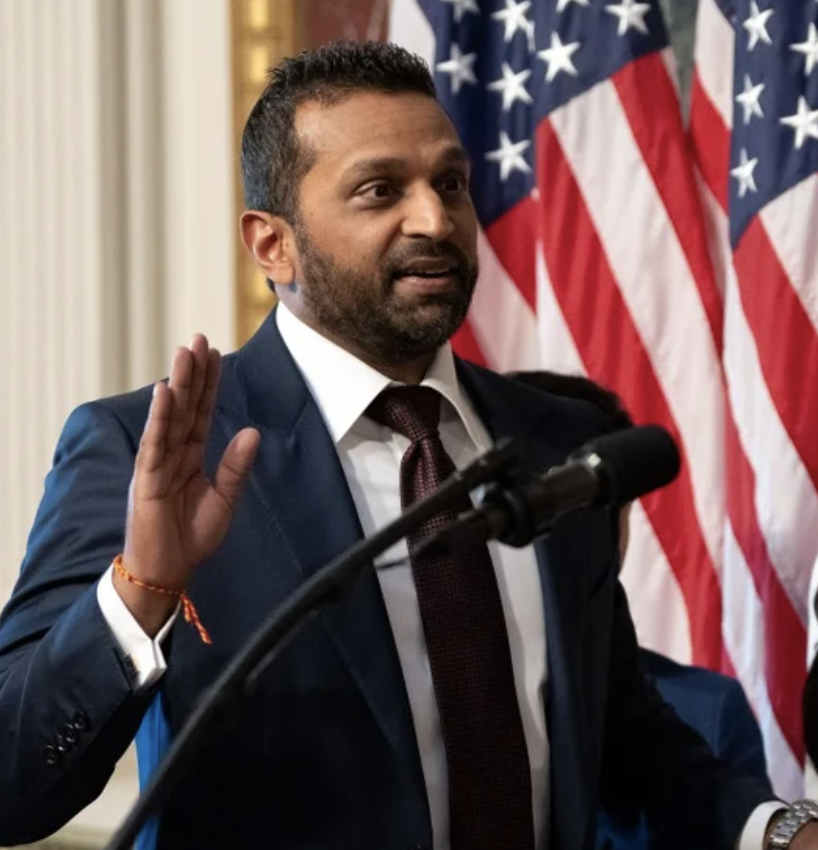 By Ross Parker
ticklethewire.com
The head of a marijuana pro-legalization advocacy organization is urging its membership to celebrate the holidays by shopping at Amazon through a designated online link in order to provide funds for its program.
Rob Kampia, the Executive Director of the Marijuana Policy Project (MPP), sent a message to many of its claimed 125,000 members asking them to buy from the nation’s largest online retailer, which would then provide a percentage of the purchases back to MPP for use in its program to advocate legalization.
By Ross Parker
ticklethewire.com
The head of a marijuana pro-legalization advocacy organization is urging its membership to celebrate the holidays by shopping at Amazon through a designated online link in order to provide funds for its program.
Rob Kampia, the Executive Director of the Marijuana Policy Project (MPP), sent a message to many of its claimed 125,000 members asking them to buy from the nation’s largest online retailer, which would then provide a percentage of the purchases back to MPP for use in its program to advocate legalization.
It is a measure of the level of public acquiescence to the marijuana “reform” movement that such an association would cause little or no backlash in a normally conservative business context. Other web sites like igive.com and goodsearch.com likewise have included the organization among its causes and charities to authorize similar arrangements for providing funding for MPP’s program.
The public seems only dimly aware that there have been major changes in marijuana policy in this country. In fact, a dramatic trend toward legalization has developed in the last decade, and its momentum seems to be gaining speed every year. The question is – where is this rush headed?
MPP was founded in 1995. Despite its ambiguous title, its clearly stated mission is to “increase public support for non-punitive, non-coercive marijuana policies.” Its vision, however, goes further— a nation where marijuana is legally regulated like alcohol.
The organization’s Advisory Board includes well known actors, musicians, and authors like Susan Sarandon, Grace Slick, Melissa Etheridge, and Bill Maher. It also has established the MPP Foundation, which makes donations tax deductible because it engages in education rather than lobbying.
For better or worse, depending on your perspective, MPP can rightly claim much of the credit for the successes of the movement. Its fundraising goal for next year is more than $ 4 million and its lobbying program in new states is aggressive.
This trend seems to be proceeding, though not always in a linear direction, through predictable stages: medical marijuana, penalty reduction, penalty elimination, decriminalization, with or without regulation, and the legalization for private use. Intentional or not, it is like there was a convocation at the end of the 20th Century with the resolution that eliminating prohibition as NORML had advocated for years was never going to happen. And so the elephant is being eaten one bite at a time.
Less than two decades ago marijuana was illegal everywhere and in every form. And the penalties were substantial. Then in 1996 by means of a ballot initiative, California legalized “medical marijuana.” Four years later Hawaii did so by legislation. A host of states have followed suit. This year Illinois became the 20th state to legalize medical marijuana.
On a later but parallel track has been the policy change for local governments and a few states to legalize its recreational use. Except for scattered municipalities. Alaska was first in 2004 when the state’s Supreme Court held that adults could legally possess up to 4 ounces in their homes. In varying forms other “personal use” decriminalizations occurred in Denver (2005), Massachusetts (2008), Delaware (2011), Rhode Island and Colorado (2012) and Washington and Vermont (2013). Of these Colorado is perhaps most significant since it legalizes the possession, cultivation and distribution, with some conditions.
For years what seemed to be the inevitable collision between these laws and federal criminal penalties caused perplexed headshakes especially among law enforcement folks. In August the Attorney General Eric Holder resolved some of these issues with his pronouncement that DOJ would not challenge the medical marijuana or recreational use statutes but would instead concentrate on large traffickers and demand reduction for children.
Many questions for the Department remain in this anomalous dual enforcement system, like the use of credit cards and bank transactions for purchasing and financing. These questions and the attitude in the public seem to be a disincentive for USAOs and federal law enforcement agencies around the country to pursue marijuana prosecutions absent aggravating factors.
But the possession, distribution, and cultivation of marijuana remain unchanged and illegal in the United States Code.
It is probably too early to fairly assess the effect of this legalization trend. Washington state police report a 9% increase of positive marijuana blood tests for drivers stopped on suspicion of impaired driving. Some surveys and anecdotal reports point to increased use of pot by young adults.
Unanswered questions abound. Like will the revenue from tax increases be enough to cover increased costs to the public? Will those substantial taxes in some states result in black market sales, such as with untaxed cigarettes? What are the implications of a Big Marijuana industry powerful enough to rival the heyday of Big Tobacco?
There still are few objectively conducted medical studies on the full health effects of the current high potency marijuana, as much as ten times or more as strong as that that deemed to have minimal harm in studies some years back. DAWN statistics on marijuana-related emergency visits continue to show a steady increase.
Perhaps for many of us the most important question is the effect of these changes on teen use of marijuana. For me that imponderable plus the medical effects of the increased potency were enough to warrant caution and the status quo on enforcement. That was this column’s bottom line two years ago.
Our policies on marijuana have not always been rational, consistent or just. A strong case could be made that unsubstantiated claims of danger, unreasonably long prison sentences, and the absence of an integrated program of enforcement, prevention, and treatment have contributed to a poor assessment of the effects of the downside to legalization.
The truth is that we do not know the answers to all the questions on the pros and cons of marijuana legalization.
Maybe the words of Supreme Court Justice Louis Brandeis in New State Ice Co. v. Liebmann in 1932 apply here: “[A] single courageous state may, if its citizens choose, serve as a laboratory; and try novel social and economic experiments without risk to the rest of the country.” One can only hope that this metaphor for state laws like that of Colorado will apply to provide a useful experiment for the rest of the country over a period of years.
So why not pause in this rushed trend toward legalization of marijuana and make a fair and complete assessment of the results of the experiment?




